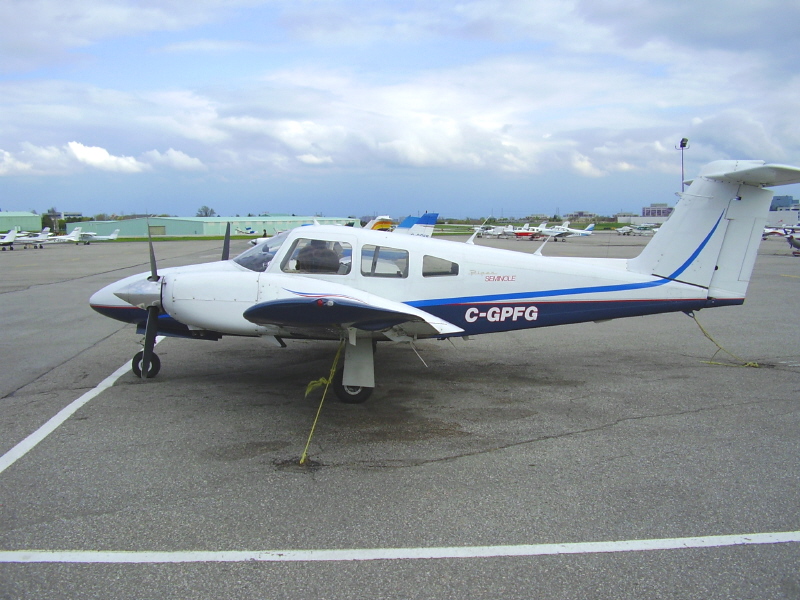|
Thorpe T-18
The Thorp T-18 is an American, two-place, all-metal, plans-built, homebuilt aircraft designed in 1963 by John Thorp.Bayerl, Robby; Martin Berkemeier; et al: ''World Directory of Leisure Aviation 2011–12'', page 98. WDLA UK, Lancaster UK, 2011. Tacke, Willi; Marino Boric; et al: ''World Directory of Light Aviation 2015–16'', page 105. Flying Pages Europe SARL, 2015. The aircraft was originally designed as an open cockpit aircraft, powered by a military surplus Lycoming O-290G ground power unit engine, but evolved into a fully bubble canopied aircraft powered by engines of up to . Design and development The T-18 was designed to be easily constructed from sheets of aluminum, and use the modified Lycoming O-290G powerplant. It was originally designed with an open cockpit and with the cylinder heads protruding through the engine cowling in the interest of simplicity. Even as originally designed, the cruising speed was quite high. The design showed great potential for high ... [...More Info...] [...Related Items...] OR: [Wikipedia] [Google] [Baidu] |
WikiProject Aircraft
A WikiProject, or Wikiproject, is a Wikimedia movement affinity group for contributors with shared goals. WikiProjects are prevalent within the largest wiki, Wikipedia, and exist to varying degrees within sister projects such as Wiktionary, Wikiquote, Wikidata, and Wikisource. They also exist in different languages, and translation of articles is a form of their collaboration. During the COVID-19 pandemic, CBS News noted the role of Wikipedia's WikiProject Medicine in maintaining the accuracy of articles related to the disease. Another WikiProject that has drawn attention is WikiProject Women Scientists, which was profiled by '' Smithsonian'' for its efforts to improve coverage of women scientists which the profile noted had "helped increase the number of female scientists on Wikipedia from around 1,600 to over 5,000". On Wikipedia Some Wikipedia WikiProjects are substantial enough to engage in cooperative activities with outside organizations relevant to the field at issue. For e ... [...More Info...] [...Related Items...] OR: [Wikipedia] [Google] [Baidu] |
Lycoming IO-360
The Lycoming O-360 is a family of four-cylinder, direct-drive, horizontally opposed, air-cooled, piston aircraft engines. Engines in the O-360 series produce between 145 and 225 horsepower (109 to 168 kW), with the basic O-360 producing 180 horsepower. The engine family has been installed in thousands of aircraft, including the Cessna 172, Piper Cherokee/Archer, Grumman Tiger, and many home-built types. It has a factory rated time between overhaul (TBO) of 2000 hours or twelve years. O-360 family engines are also widely used in airboats, most notably in the Hurricane Aircats used by the US Army during the Vietnam War. The first O-360 certified was the A1A model, certified on 20 July 1955 to United States CAR 13 effective March 5, 1952 as amended by 13-1 and 13-2. The Lycoming IO-390 is an O-360 which has had its cylinder bore increased by , developing . Series The O-360 family of engines comprises 167 different models with 12 different prefixes. All have a displaceme ... [...More Info...] [...Related Items...] OR: [Wikipedia] [Google] [Baidu] |
Mustang Aeronautics Mustang II
__NOTOC__ The Mustang Aeronautics Mustang II is a two-seat aerobatic sports airplane developed and marketed in the United States for homebuilding.Vandermeullen, Richard: ''2012 Kit Aircraft Buyer's Guide'', Kitplanes, Volume 28, Number 12, December 2011, page 62. Belvoir Publications. ISSN 0891-1851Bayerl, Robby; Martin Berkemeier; et al: ''World Directory of Leisure Aviation 2011-12'', page 113. WDLA UK, Lancaster UK, 2011. ISSN 1368-485XTacke, Willi; Marino Boric; et al: ''World Directory of Light Aviation 2015-16'', page 119. Flying Pages Europe SARL, 2015. Design and development Robert Bushby acquired the rights to the Long Midget Mustang in 1959 and four years later began development of a two-seat, side-by-side version. This eventually flew in 1966 and plans were made available soon thereafter. Rights to both the Midget Mustang and the Mustang II were sold to Mustang Aeronautics in 1992. A single engine in tractor configuration airplane, the Mustang II features cantile ... [...More Info...] [...Related Items...] OR: [Wikipedia] [Google] [Baidu] |
Jeffair Barracuda
The Jeffair Barracuda is a high-performance sporting monoplane that was developed in the United States in the 1970s and is marketed for homebuilding. Designed and built by Geoffrey Siers, the prototype won the prize for "Most Outstanding New Design" at the EAA Fly-in in 1976. It was a low-wing cantilever monoplane of wooden construction with retractable tricycle undercarriage and side-by-side seating for two. Around 150 sets of plans had sold by 1977. Development Geoffrey Siers was a former RAF pilot and engineer for Boeing in 1967. He set out to design an aircraft that was fast, aerobatic, two place, and had range to fly long cross-country flights. The aircraft was refined after a full size cockpit mockup was made. The lightweight construction of the plywood-covered wooden de Havilland Mosquito was the inspiration for the materials choice. The retractable landing gear came from a Piper PA-24 Comanche The Piper PA-24 Comanche is an American four-seat or six-seat, low-wing, a ... [...More Info...] [...Related Items...] OR: [Wikipedia] [Google] [Baidu] |
Thorp T-211
The T-211 is a light aircraft designed in the US by John Thorp in 1945. It is a low-wing monoplane of conventional layout with fixed tricycle undercarriage and a sliding canopy. John Thorp developed the Sky Scooter with lessons learned from developing the Lockheed Little Dipper project in 1944. It bears some family resemblance to the Piper Cherokee, a design that Thorp later contributed to significantly. Development Thorp constructed eight prototypes, and had the design certified by the FAA, but was unable to find a foothold in the Cessna-dominated post-war US market. The original prototypes were powered by a 65 hp Lycoming engine. Novel features of the Sky Skooter include an all movable horizontal stabilizer and externally ribbed wings and tailplane. The wings were corrugated to impart stiffness, each wing needing only three internal ribs. This feature simplified construction, reduced the number of rivits (and weight), and helped control the spanwise flow of air over the wings ... [...More Info...] [...Related Items...] OR: [Wikipedia] [Google] [Baidu] |
Tricycle Gear
Tricycle gear is a type of aircraft undercarriage, or ''landing gear'', arranged in a tricycle fashion. The tricycle arrangement has a single nose wheel in the front, and two or more main wheels slightly aft of the center of gravity. Tricycle gear aircraft are the easiest for takeoff, landing and taxiing, and consequently the configuration is the most widely used on aircraft.Crane, Dale: ''Dictionary of Aeronautical Terms, third edition'', page 524. Aviation Supplies & Academics, 1997. Aviation Publishers Co. Limited, ''From the Ground Up'', page 11 (27th revised edition) History Several early aircraft had primitive tricycle gear, notably very early Antoinette planes and the Curtiss Pushers of the pre-World War I Pioneer Era of aviation. Waldo Waterman's 1929 tailless '' Whatsit'' was one of the first to have a steerable nose wheel. In 1956, Cessna introduced sprung-steel tricycle landing gear on the Cessna 172. Their marketing department described this as "Land-O-Matic" t ... [...More Info...] [...Related Items...] OR: [Wikipedia] [Google] [Baidu] |
Circumnavigation
Circumnavigation is the complete navigation around an entire island, continent, or astronomical object, astronomical body (e.g. a planet or natural satellite, moon). This article focuses on the circumnavigation of Earth. The first recorded circumnavigation of the Earth was the Magellan's circumnavigation, Magellan–Elcano expedition, which sailed from Sanlucar de Barrameda, Spain in 1519 and returned in 1522, after crossing the Atlantic Ocean, Atlantic, Pacific Ocean, Pacific, and Indian Ocean, Indian oceans. Since the rise of commercial aviation in the late 20th century, circumnavigating Earth is straightforward, usually taking days instead of years. Today, the challenge of circumnavigating Earth has shifted towards human and technological endurance, speed, and List of circumnavigations#Miscellaneous, less conventional methods. Etymology The word ''circumnavigation'' is a noun formed from the verb ''circumnavigate'', from the past participle of the Latin verb '':wikt:circumnav ... [...More Info...] [...Related Items...] OR: [Wikipedia] [Google] [Baidu] |
Oshkosh, Wisconsin
Oshkosh is a city in Winnebago County, Wisconsin, of which it is the county seat. The city had a population of 66,816 in 2020, making it the ninth-largest city in Wisconsin. It is also adjacent to the Town of Oshkosh. History Oshkosh was named for Menominee Chief Oshkosh, whose name meant "claw" (cf. Ojibwe ''oshkanzh'', "the claw"). Although the fur trade attracted the first European settlers to the area as early as 1818, it never became a major player in the fur trade. The 1820s mining boom in southwest Wisconsin along with the opening of the Erie Canal shifted commercial activity away from the Fox River Valley and Green Bay. Soon after 1830, much of the trade moved west, as there had been over-trapping in the region. Following the publicity caused by the Black Hawk War in 1832, there was increased interest in settling Wisconsin by whites from the East Coast, especially New York, Indiana, and Virginia, and by 1836 the cities of Milwaukee, Madison, Janesville, Beloi ... [...More Info...] [...Related Items...] OR: [Wikipedia] [Google] [Baidu] |
Donald Taylor (aviator)
Donald P. Taylor (October 1, 1918 – December 2, 2015) was an American aviator, notable for being the first person in history in the late summer and early fall of 1976 to successfully fly a homebuilt aircraft around the world. Career From an early age, he'd resolved "I will build an airplane, and I will fly it round-the-world." His plane, ''Victoria '76'' (named for the only one of Ferdinand Magellan's ships to complete her mission), a Lycoming-powered Thorp T-18 (N455DT) was fitted with improved communications and navigational equipment as well as a new fuel system after his initial 1973 round-the-world attempt had to be aborted due to bad weather between Japan and the Aleutian Islands. Taylor, who lived at the time in California, returned to his starting point of Oshkosh, Wisconsin a hero two months to the day after the August 1, 1976, start of his eastbound journey. The planning of this circumnavigation was especially complicated considering that both the People's R ... [...More Info...] [...Related Items...] OR: [Wikipedia] [Google] [Baidu] |
Thorp Central
''Thorp'' is a Middle English word for a hamlet or small village. Etymology The name can either come from Old Norse ''þorp'' (also ''thorp''), or from Old English (Anglo-Saxon) ''þrop''. There are many place names in England with the suffix "-thorp" or "-thorpe". Those of Old Norse origin are to be found in Northumberland, County Durham, Yorkshire, Lincolnshire, Cambridgeshire, Norfolk, and Suffolk. Those of Anglo-Saxon origin are to be found in southern England from Worcestershire to Surrey. Care must be taken to distinguish the two forms. Variations of the Anglo-Saxon suffix are "-throp", "-thrope", "-trop" and "-trip" (e.g. Adlestrop and Southrope). Old English (Anglo-Saxon) ''þrop'' is cognate with Low-Saxon ''trup''/''trop''/''drup''/''drop'' as in Handrup or Waltrop, Frisian ''terp'', German ''torp'' or ''dorf'' as in Düsseldorf, the 'Village of the river Düssel', and Dutch ''dorp''. It also appears in Lorraine place-names as ''-troff'' such as Grosbliederstro ... [...More Info...] [...Related Items...] OR: [Wikipedia] [Google] [Baidu] |
Classic Sport Aircraft
A classic is an outstanding example of a particular style; something of lasting worth or with a timeless quality; of the first or highest quality, class, or rank – something that exemplifies its class. The word can be an adjective (a ''classic'' car) or a noun (a ''classic'' of English literature). It denotes a particular quality in art, architecture, literature, design, technology, or other cultural artifacts. In commerce, products are named 'classic' to denote a long-standing popular version or model, to distinguish it from a newer variety. ''Classic'' is used to describe many major, long-standing sporting events. Colloquially, an everyday occurrence (e.g. a joke or mishap) may be described in some dialects of English as 'an absolute classic'. "Classic" should not be confused with ''classical'', which refers specifically to certain cultural styles, especially in music and architecture: styles generally taking inspiration from the Classical tradition, hence classicism. ... [...More Info...] [...Related Items...] OR: [Wikipedia] [Google] [Baidu] |



